| Photojournal
- 30 March
2005
Beef,
bees, and butterflies
|
On Wednesday the 30th
of March, I had an appointment in the morning with my chiropractor
in Abbotsford. Abbotsford is about a 45-minute drive from where
I live, away from the city. After my appointment, I was feeling
slightly taller and I decided to head back to work by a scenic
route, exploring the area from south of Abbotsford westward to
Cloverdale. There is a lot of agriculture in this area, and I
saw a few interesting farms, which I'll probably go back to photograph
one day.
The thing that finally
made me pull over and get the camera from the trunk was a field
with a few shaggy cattle in it. Here's one of the hairy beasts,
looking a lot like a sheepdog with horns.
|
|
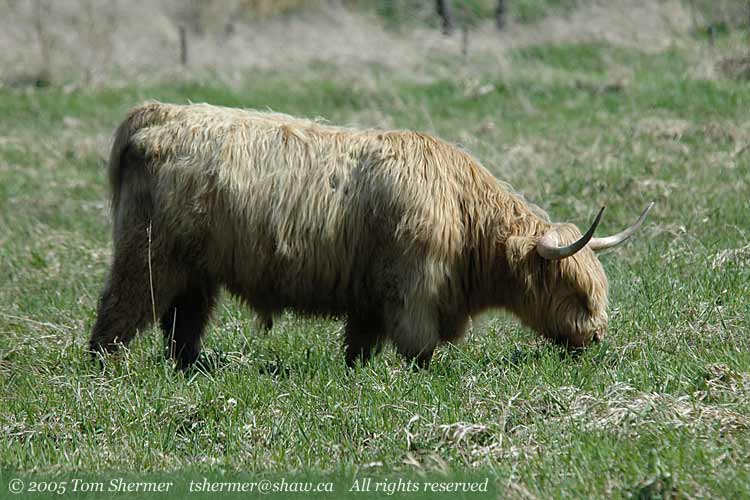 |
| The following
photo shows another. These are a breed of cattle called Highland
Cattle, and there are a few places around which raise them. I like
the woolly look, and their rather graceful horns. |
|
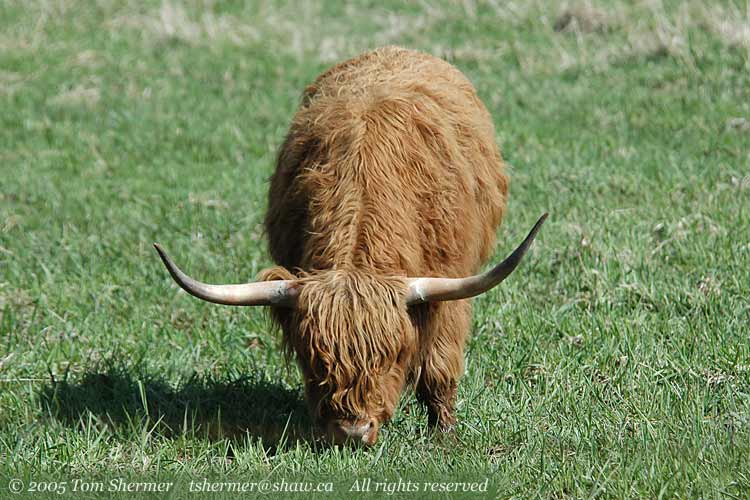 |
|
I continued on and
drove past a couple of crows on the back of a sheep, on the other
side of a busy road. I turned around to get photos, but the scene
was gone by the time I got back to it.
So wiithout further
photography, I made it back to Cloverdale and thence to Whalley
and work.
After work I drove
across the Patullo bridge towards home but decided to veer off
to Glenbrook Ravine Park. There I went in search of birds but
instead found only bugs. The bugs were a bit interesting, though.
Here's a bee on a hyacinth flower. It's a Bumble Bee of some sort,
but I'm not sure which sort. As far as I know, we get four kinds
of them here: Golden Northern, Golden-orange, American, and Red-tailed.
The difference between them is most easily seen is in the color
of the stripes on their abdomen, but I didn't get a clear photo
showing that.
Bumble Bees, of course,
can sting multiple times, unlike Honey Bees.
|
|
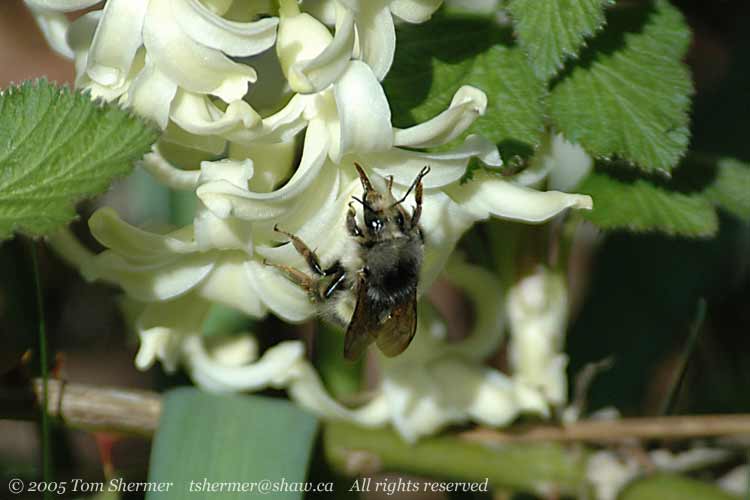 |
|
I also found this fellow
buzzing around on the side of the path. Despite his bold patterning,
he is a not a bee or wasp. He's a fly—a Hover Fly of some
sort. There are enough kinds of hover flies that my guide books
don't go into details of distinguishing them. Hover Flies don't
sting, and they can often be distinguished from the stinging insects
(wasps and bees) by their short antennae and flattened abdomen.
Hover Flies are considered very beneficial insects, as their larvae
eat aphids and the adults pollenate flowers the same as bees.
So this guy is your friend. Shake hands with him.
|
|
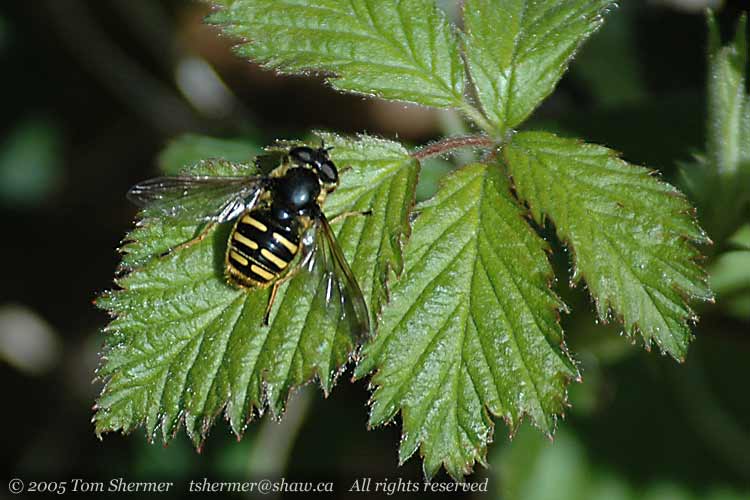 |
| Also in
the ravine, I found my first Mourning Cloak butterfly of the year.
They're a pretty common sight around these parts. This one looks
a little worn. |
|
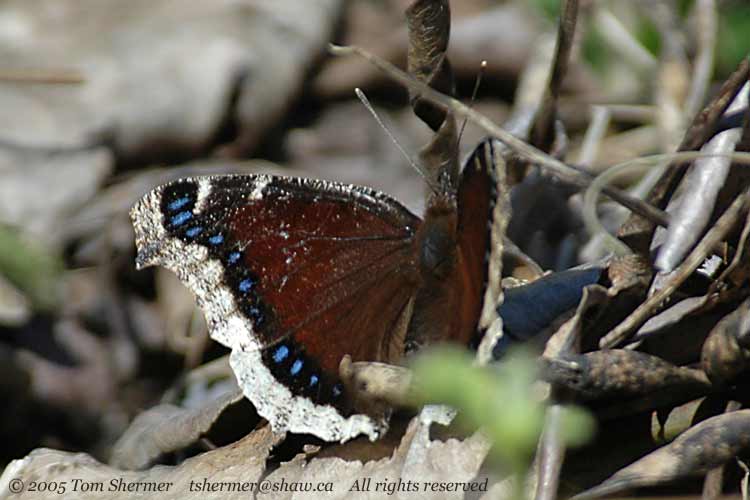 |
| There were
a bunch of little white butterflies flitting about, too. All of
the ones that I examined showed fairly heavy dark veins on the wings,
identifying them as Mustard Whites. I had to keep the photos a little
underexposed to get proper detail on their wings. |
|
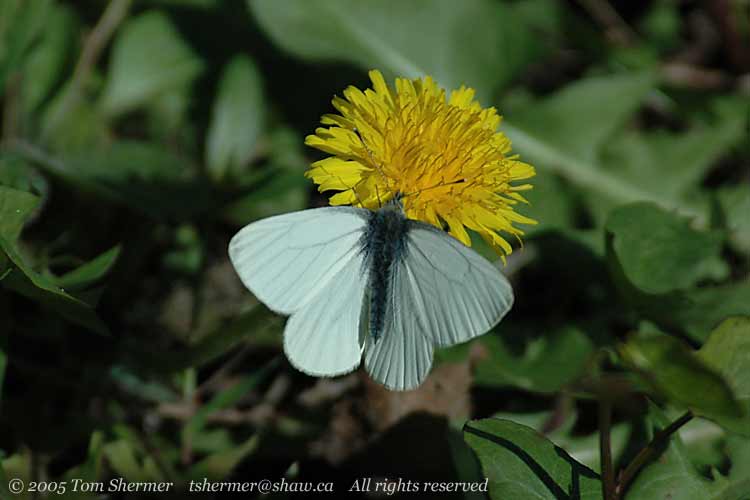 |
| The only
other butterflies I found were a few worn Green Commas, like this
fellow. |
|
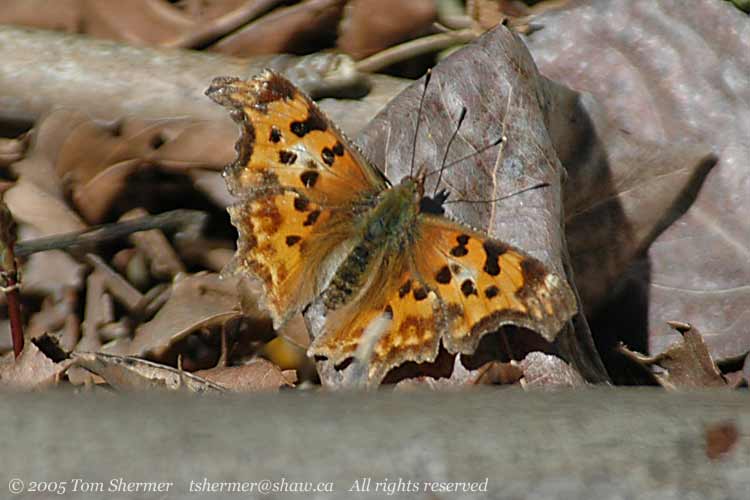 |
|
But sunset comes quickly
to the ravine, and I ran out of good light after only about a
half an hour of photography.
Next time, I'll send
along some more typical springtime subjects from another part
of New Westminster.
Taking photos of whatever
presents itself,
Tom
|
|
|